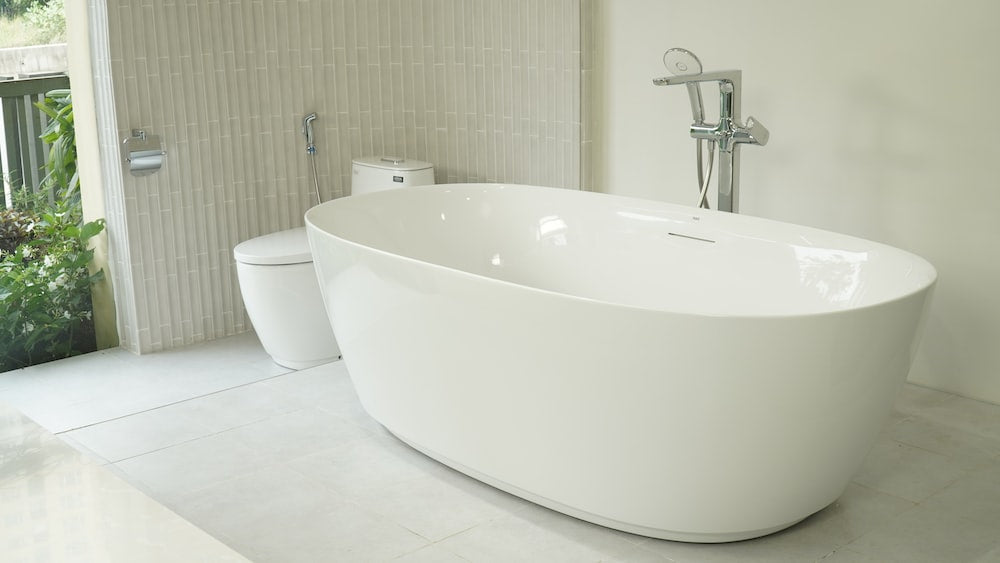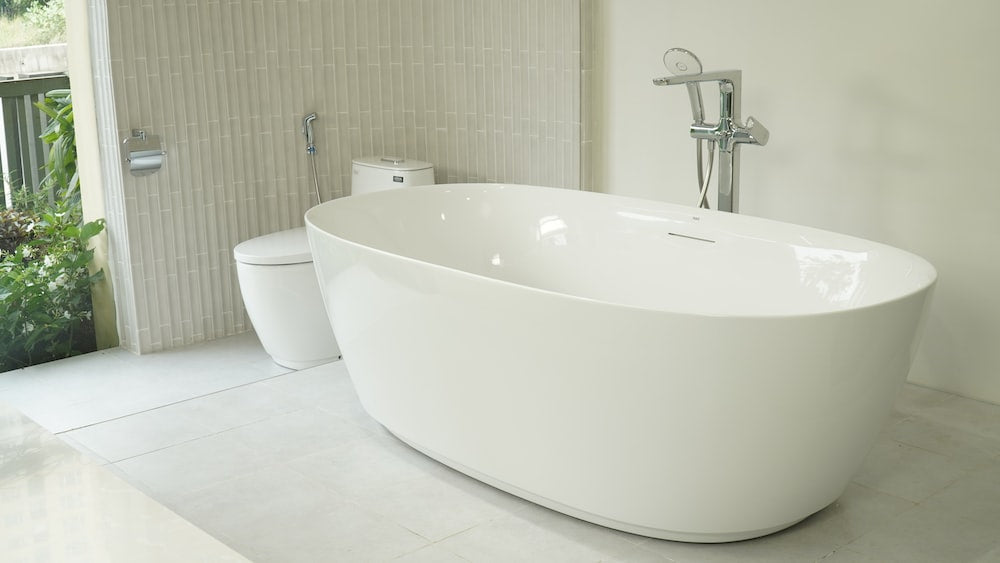Refinishing a bathtub is the process of restoring the surface of an existing bathtub to fix surface damage and give the bathtub a more aesthetically pleasing appearance. It is a less expensive alternative to replacing a bathtub; nevertheless, the procedure often requires the use of toxic chemicals such as methylene chloride, acids, and isocyanates. Although it is cheaper, replacing a bathtub is still a better option.
Methylene chloride is a chlorinated solvent that is a volatile liquid that is colorless and has a scent that is described as sweet. It is frequently referred to as dichloromethane and has a wide variety of applications in industry, including the removal of paint, the cleaning of metal, and the removal of grease. Workers are put in danger by methylene chloride because they inhale it and let it enter their bodies through their skin.
It is not possible to detect the odor of methylene chloride in the air until the concentration has reached a level that exceeds the OSHA allowable exposure limits (PELs). When workers first detect the odor of methylene chloride, they have already been subjected to an unsafe level of exposure. However, it is possible for the human body to rapidly grow desensitized to the odor, and a worker may have been overexposed even if they cannot detect the odor.
Because bathrooms are typically small, confined areas with little or no ventilation, using goods containing methylene chloride in a bathroom is a very risky endeavor. It is common practice for workers to spray or pour a substance designed to strip bathtubs inside the basin of bathtub and then brush the product over the surface of the tub. Because methylene chloride is a volatile organic compound, the vapors produced by the chemical can quickly accumulate in confined areas.
This is because the chemical evaporates more quickly when it is sprayed, brushed, or poured. Additionally, because methylene chloride evaporates quickly (it has a high vapor pressure), fumes can build in the bottom section of a bathtub and also in the worker's breathing zone when working in the bathtub. This is a potential hazard for the worker.
Because of this circumstance, dangerously high amounts of methylene chloride are produced, and the air that may be breathed is even replaced. There have been cases in which mortality has been caused by exposure to as little as six ounces of a substance based on methylene chloride.
Implications for Health
When the body absorbs methylene chloride, it has an effect on the functions of the brain, including concentration. If the concentration is high enough, it might cause the person to cease breathing. Exposure to methylene chloride can result in symptoms such as drowsiness, exhaustion, headaches, nausea, a "feeling of intoxication," as well as irritation of the eyes, nose, and throat. When in prolonged contact with the skin, discomfort and even chemical burns may result.
Providing Safety for Employees
If possible, methylene chloride should not be used at any of the sites, and if it must be, the amount utilized should be kept to a minimum. Keep in mind that there may be additional dangers associated with using other products and other stripping agents.
Spraying methylene chloride as little as possible or at all should be avoided.
To get rid of the vapors that are being produced by the stripping agents in the bathtub, install local exhaust ventilation (LEV) and a source of fresh makeup air. To be more specific, the majority of mobile LEV systems come equipped with a fan, flexible ductwork, and a hood close to the tub that vents potentially harmful vapors to the outside air.
Ensure that all applicable OSHA requirements, such as the norm for Methylene Chloride (29 CFR 1910.1052), as well as any other applicable safety and health standards and rules, are followed during the stripping process.
To effectively regulate vapors to below applicable PELs, use the assistance of a trained occupational safety and health specialist to aid in the design and installation of local exhaust ventilation (LEV).
Observe proper housekeeping procedures, such as controlling accidental spills and leaks and maintaining adequate levels of personal hygiene (such as making skin-washing areas available to workers).
To avoid having to bend into the bathtub, you should make use of instruments that have long handles, such as scrapers and brushes.
In order to reduce your exposure to the fumes of methylene chloride, you should leave the room as soon as the stripping agent based on methylene chloride has been applied. Personal safety equipment (PPE) that is resistant to methylene chloride should be worn at all times during the refinishing process. This includes full-face air-supplied respirators, protective gloves, and any other PPE that is deemed necessary.
Tub Cast Ekopel is safe and friendly for usage!
Made in the USA, safe for the environment, and non-toxic: Tub Cast Ekopel's long-lasting glaze is oil-free and doesn't contain any dangerous ingredients; it also emits no fumes and never peels! Tub surfaces can be brought back to a "like new" dazzling luster by using this product's thick, full-seal coating.
Whether you have recently bought a home, are in the process of selling your home, own a rental property, or flip houses for a living, Ekopel is the Bathtub Refinishing Kit that is the most convenient, safe, and simple to use for any other product on the market.
Are There Any Odors Left Behind by Tub Cast Ekopel Bath Refinishing Products?
The drug does not have a taste that is caustic, and the odor is quite mild and not at all potent. It is not absorbed by fabrics and vanishes in a short amount of time.
It has the scent of spray cleaner, but after it has been thoroughly blended, any smell is gone.
Are there any health risks that may be associated with using Tub Cast Ekopel Products?
The German Institute ISEGA conducted a series of tests on the substance, and the results showed that it satisfies the criteria DIN EN 71-3 (Safe for Children) and does not cause any harm when it comes into contact with the skin. We strongly advise that the appropriate protective gear for the skin, eyes and respiratory system be used at all times during the mixing and application of the material.


